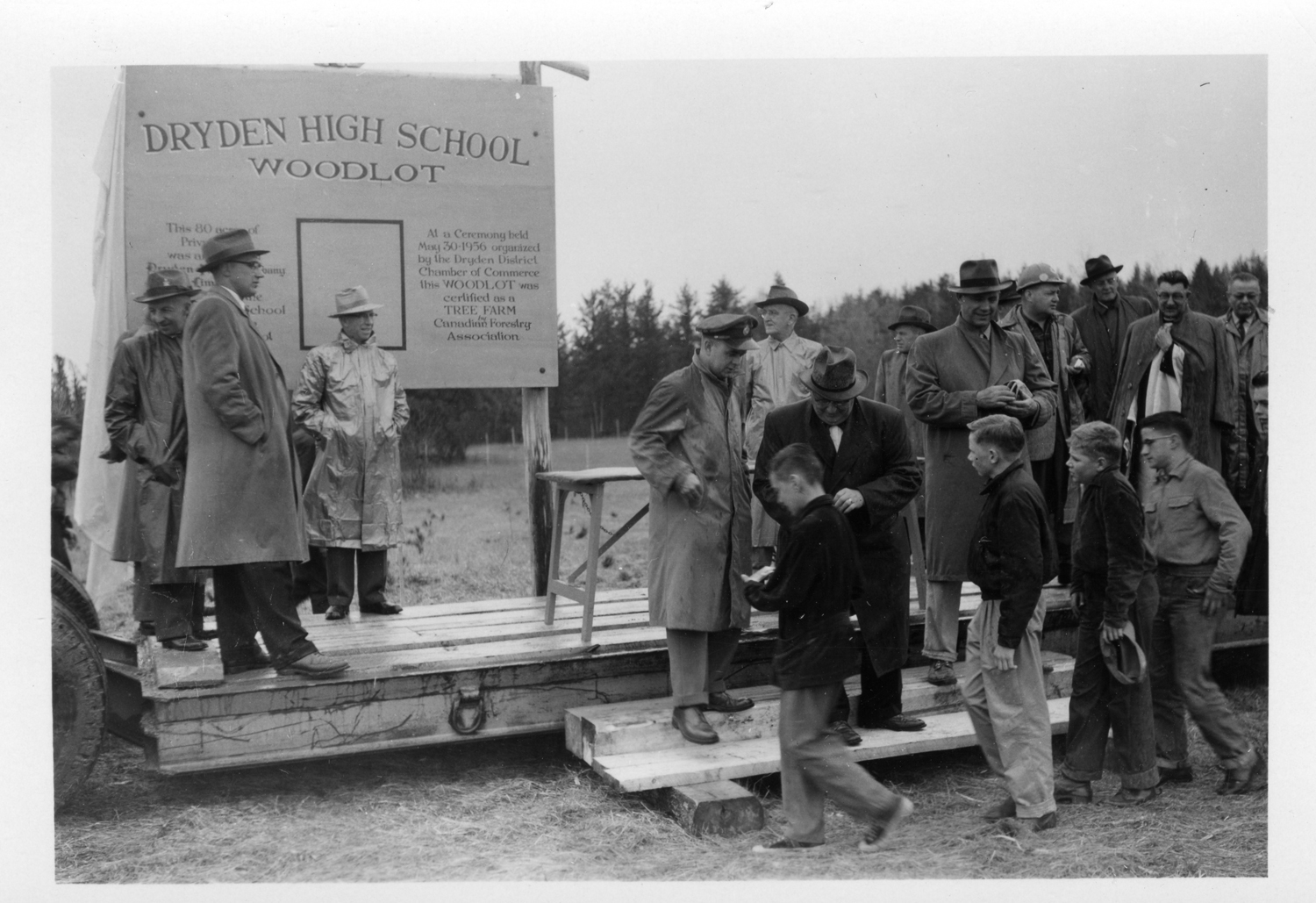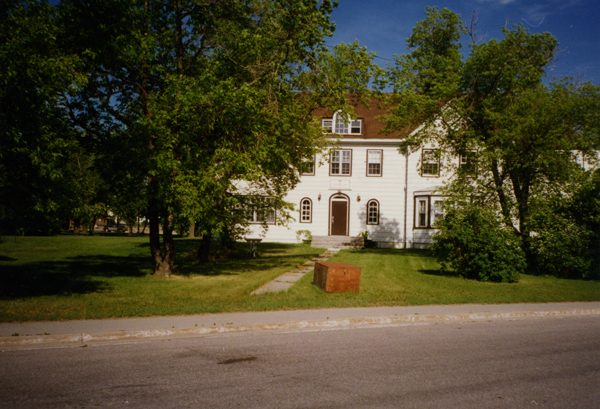
Bob Bunney started working as a forester on July 1, 1951. He was first hired as a “cruiser”. As a cruiser he was responsible for going into the deep bush for up to two weeks at a time to take an inventory of the forest. To perform an inventory, the cruiser would measure the diameter, height and age of various species of trees encountered on designated plots.
Using aerial photographs as a guide, cruisers travelled by foot, canoe and would portage to predetermined locations. There they measured a plot on the ground that was four “chains” in length and half a chain in width. A chain was sixty-six feet in length. Spaced over a designated area they would measure, mark and record information found on a number of plots.
They would catalogue an inventory of the spruce trees, jack pine, balsam fur and poplar trees. In this way, the Company could draft short term and long term plans for future harvesting,
As a cruiser Bob worked as a member of a team with Andy Sherban who was the “tally man”. The tally man had maps and aerial photographs of the forest. Lines were drawn on the maps and photographs separating the different species of trees. The tally man along with the cruiser would follow those lines on the ground using a compass. In this way they marked the plot on the ground. They would then sample and record information for the trees on that plot. They would measure the height, diameter and age of the trees found on each plot.
To measure the height of a tree, one walked a certain distance from the base of the tree and then looked through the lens of a device and that indicated the height of the tree.
To measure the age of a tree one used a borer to drill into the tree and remove a core. The age was determined by counting the number of rings in the core and adding five to seven years to represent the time it took the tree to grow to the height when the core was taken. The diameter of all common species of trees was recorded as well.
The operation of “cruising” and taking an inventory of the forest for long term forest management is still done today.
Bob’s long periods in the deep bush made life lonely for Joanne who was Bob’s wife. When Bob and Joanne first came to Dryden they resided in the “staff house” which was situated at the present location of the training building on the corner of Duke and Earl Streets. The staff house was operated by the Paper Company and was rented to employees who stayed temporarily in Dryden while working at the Paper Company. It was also rented to other white collar professional workers such as teachers and bank employees. The staff house had eight rooms along with a VIP suite. There was a common area for people to gather as well as a common dining room.
Pictured here is the staff house

Bob was assigned to be the camp clerk at Godsen Lake in 1952. Here his duties were to scale (measure) the wood cut by the work force at the camp. Also he was responsible for the operation of a small store in the office that carried supplies needed by the men throughout the year. Some items that were stored in the store was clothing, tobacco products and instruments used in the harvesting process. In addition he had to haul the supplies from town to the camp.
In 1953 Bob became the chief Forester for the Dryden Paper Company. As chief forester, he would organize the cruising expeditions for men to undertake. He also oversaw the long term operations of the forest lands. This included the forest areas to be harvested, the location where the roads were to be built to transport the pulp wood from the forest, and when and where the reforestation was to occur.
Part of Bob’s role as chief forester was to deal with the Ministry of Natural Resources, as all of the forest that was harvested was on crown land. He would supervise the draft of an annual plan, a five year plan as well as a twenty year plan for the management of the forest resources. Bob remained chief forester from 1953 until 1972. It is interesting to note that during this period, the late 1960s, that mechanical harvesting of wood took place 24 hours a day and seven days a week and in all types of inclement weather.
From 1972 until 1977 Mr. Bunney was appointed as manager of the sawmill operations for the Company. At around the same time, the company purchased Colenso. Colenso was a sawmill operation that was located on the road leading to Red Lake. Also Mr. Bunney was involved in the development work that looked at the feasibility of building a saw mill operation in Ear Falls. A sawmill was constructed after Bob left as manager of sawmill operations, but he did a lot of the preparatory work in advance of its construction. The Ear Falls saw mill started into operation sometime during the mid 1990s.
In 1977 Bob was appointed Assistant woodlands manager. Again he was responsible for long term plans in the management of forest resources, sawmill planning and dealing with the Ministry of Natural Resources. . it was decided that rather than having the workers lodged in a bush camp, it was more feasible to have the workers commute to the logging areas every day. Thus the workers spent their time off with their families and this help improve employee morale. Better road construction at the time facilitated the transport of men to and from home and to the harvesting areas.
In 1987 Bob was appointed resident Woodlands Manager and this entailed overseeing of all the Woodlands operations. His duties included obtaining timber rights from the government, harvesting the timber and having it delivered to the local paper company. He held this position until his retirement in 1991.
It was Tommy Jones who conceived the idea for a high school conservation course and proposed the idea to the President of the local Paper Company, Lorne Goodall who agreed wholeheartedly to the proposal.
The goal of the Conservation Course was and is to this day, a means of establishing an understanding and appreciation of the natural resources, soils, minerals, forests, water and wildlife that are so important to the economy and welfare of Northwestern Ontario.
Pictured here is Bob Bunney demonstrating to the students how to plant tree by first digging a hole.
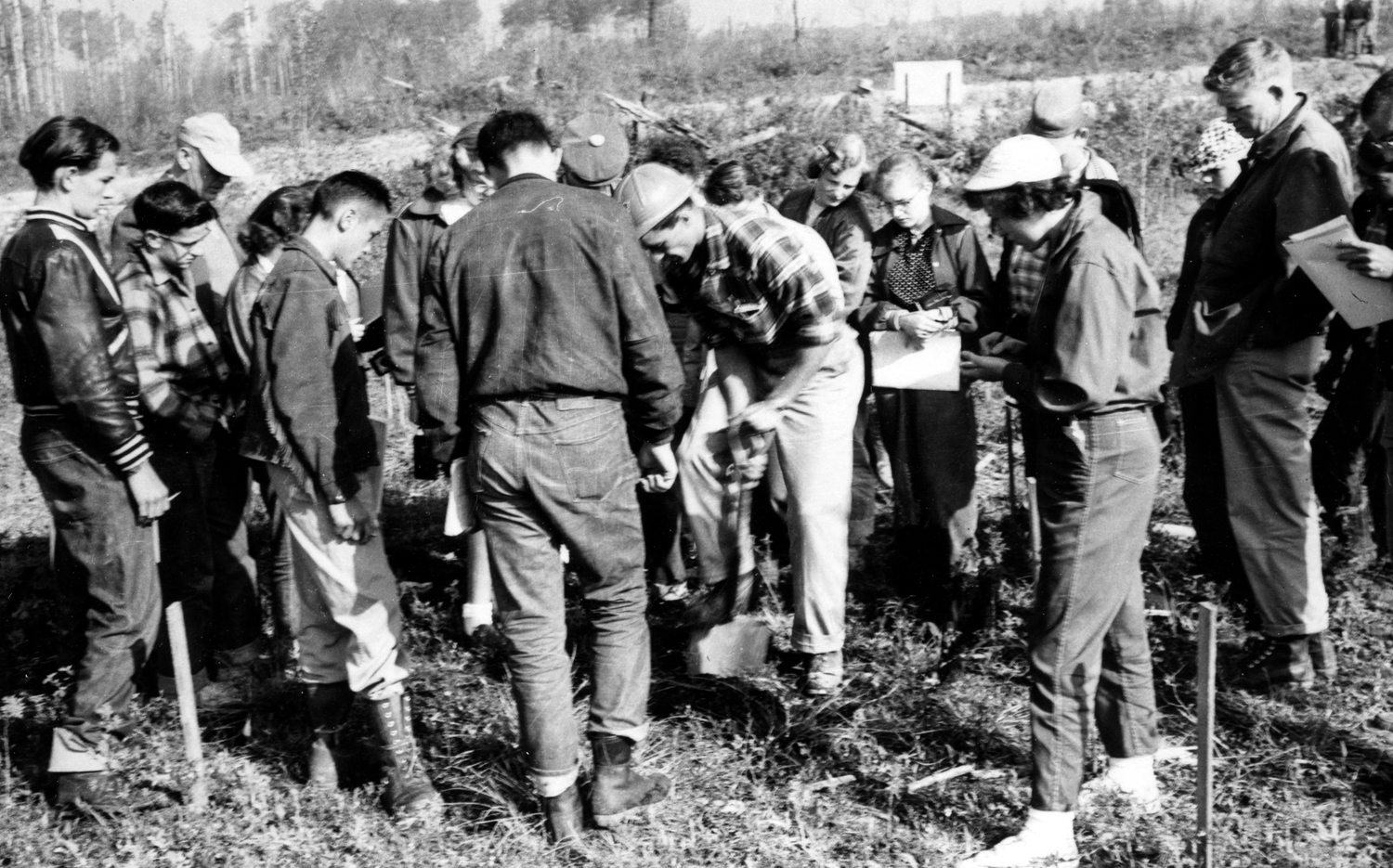
To gather ideas for the course, a forester with the Paper Company and an Agricultural teacher from the high school traveled to Eagle River, Wisconsin where a similar course called “Trees for Tomorrow” was already in place. They were so impressed with the course in Wisconsin that they decided to adopt some of the ideas. The curriculum for the DHS conservation course was further enhanced by input from a variety of sources which included The Canadian Forestry Association, The Ontario Forestry Association, The Department of Agriculture, the Hydro Electric Power Commission and The Department of Lands and Forests.
Bob Bunney was instrumental in the operation of the first Dryden High School Conservation course. When the first course was held in 1957 it included thirty six students, eighteen boys and eighteen girls. The students as well as the instructors were housed for three days at the Company’s landing camp located at Contact Bay. There, the students were taught about the wise use of resources, forest management, wildlife and soils. The course was a huge success!
Pictured here is professor Doug Hoffman from the University of Guelph discussing soils with the DHS students.
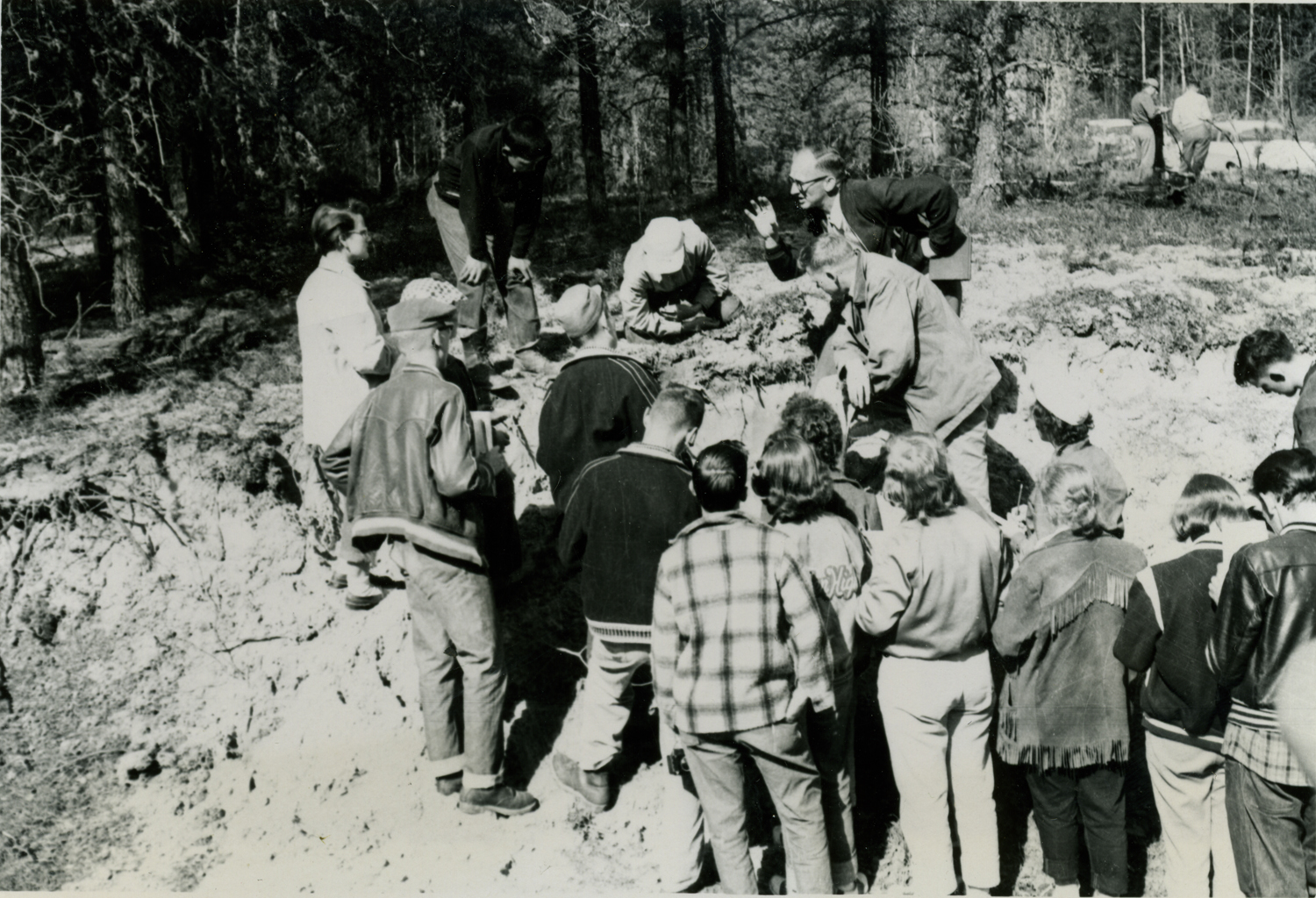
Bob recalled some interesting accounts concerning the first few Conservation courses. The first trucks that transported the students were tandem trucks (four wheels on back and two wheels on the front). They had makeshift wooden boxes that were sixteen feet long, eight and one half feet wide and eight feet tall bolted to the truck. The students sat on wooden benches. A few years later a second means of transportation was used. The Company used Morris buses that were underpowered. When it came to transporting the students up a steep hill Bob and others had to get out of the truck and push.
During the eleventh year of the Conservation course (1968), there were still thirty-six students housed at Contact Bay but an additional thirty students joined them on a daily basis. This arrangement lasted for five years, from 1968 through 1972. In 1972 the Contact Bay Camp was declared unfit to house the DHS Conservation students. In 1973 this change in operations meant that sixty students would be bussed on daily basis to and from the observation sites. The Dryden Yacht Club became the main base headquarters. From there the students traveled by various means to the observation sites. After the changeover to a full commuter operation the students traveled to areas north, east and west of Dryden. Previously, when Contact Bay was used as the base camp most of the travel to sites for field tours was concentrated in the area south of Dryden.
Some of the cooks and cookies serving good food to the conservation club participants
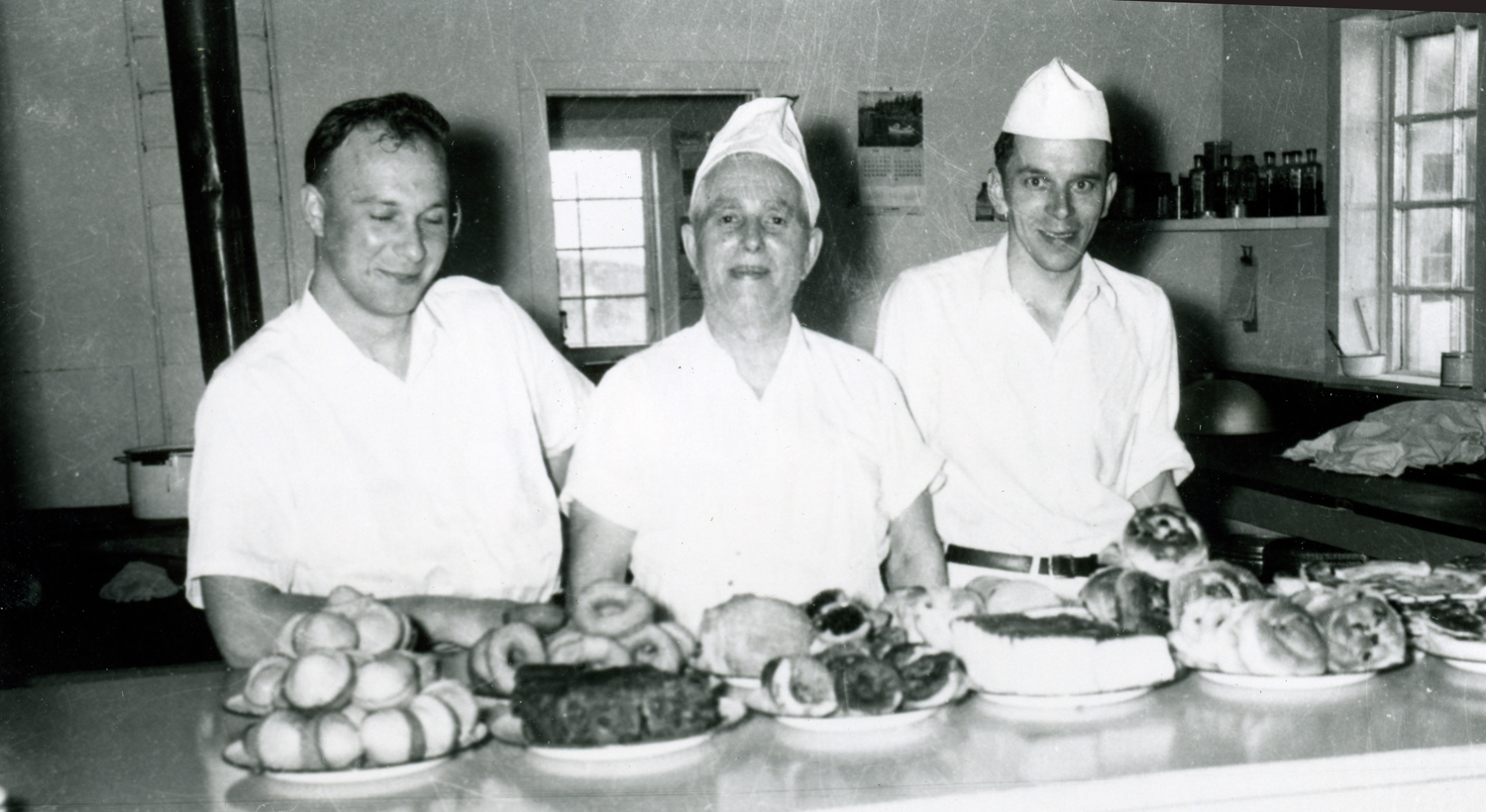
Here a conservation officer is showing some students a trophy of a bird
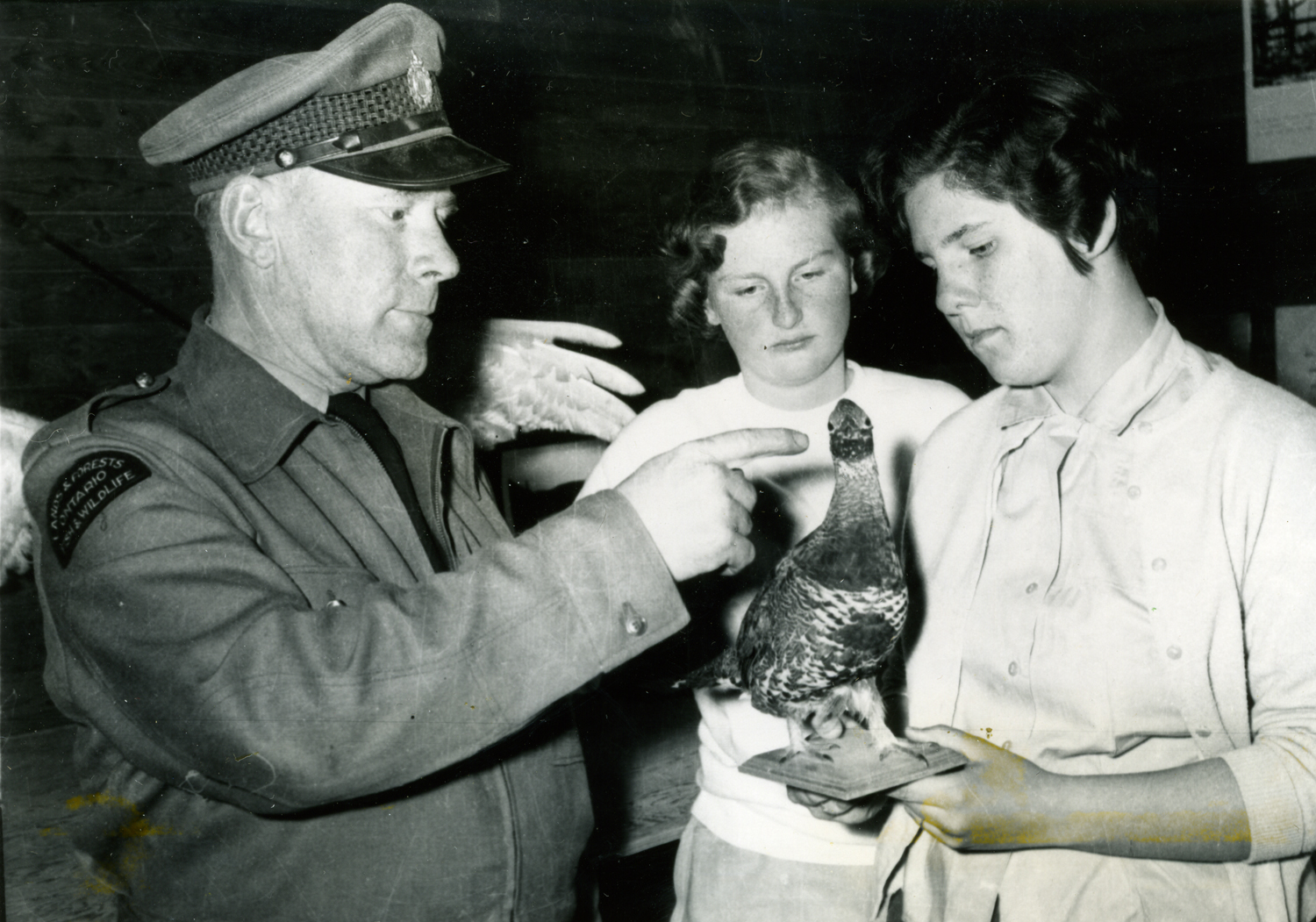
While the students were being commuted to the various observational sites, the instructors befriended the students. Singing was popular during the commutes. Skits and other talent demonstrations were performed during the evening, at different field tours and at the dormitories at the end of the day.
Chow time! The man on the far right is forester John McKenzie
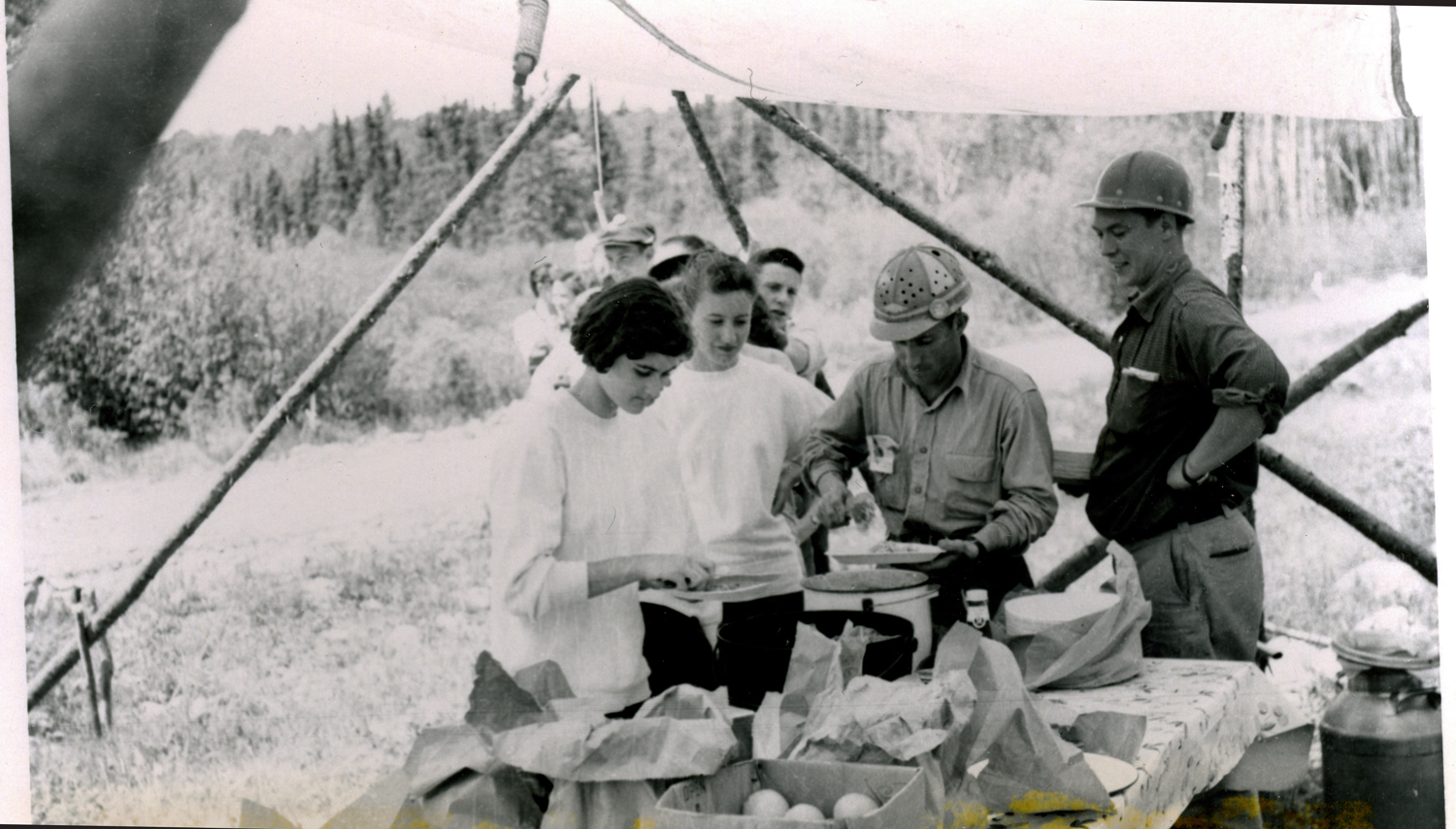
No historical perspective of the conservation camp can be made without mentioning the weather and the insects. The students experienced cold, rain and heat. There were black flies, mosquitoes, horse flies and army worms.
One of the daily highlights remembered by all was the good, plentiful food.
Finally, with respect to the DHS conversation course, resource Management has changed over the years and the field trips and instructions have related such changes as they occur.
Students receiving their badges and certificates for successfully completing the Conservation Course
